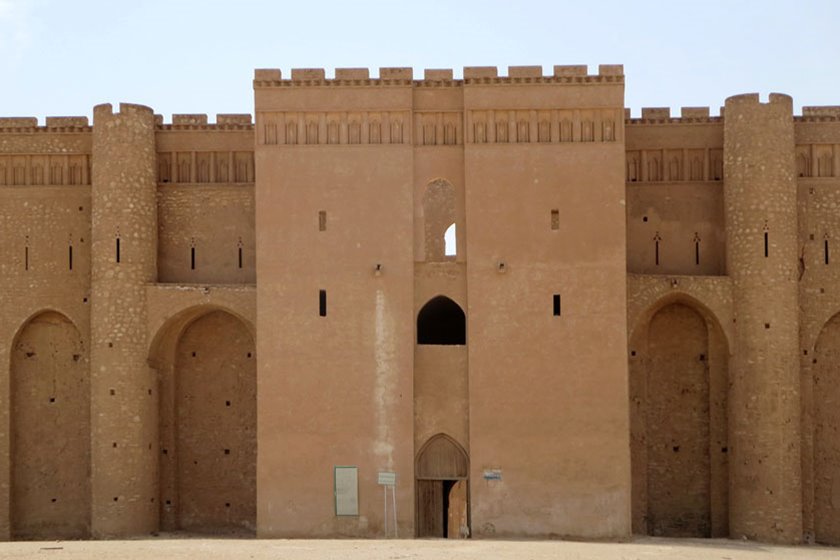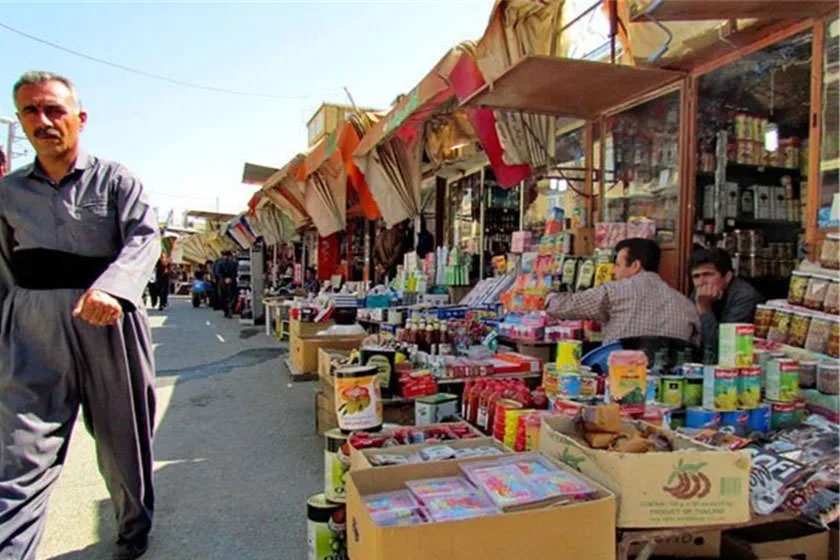A Visual Journey: Must-See Sights of Iraq ?️
“In this article, join us on Gulf City Pedia to explore the fascinating historical attractions of Iraq’s cities. Gain comprehensive insights into the must-visit landmarks, ensuring you have a complete list of attractions for your trip to this country. Embark on a journey through the historical cityscape, and revel in the full enjoyment of a trip to a city rich in history.”
The ancient city of Hatra
The ancient city of Hatra, also known as Al-Hadr, is located 110 kilometers southwest of Mosul and 70 kilometers west of Ashur. Inhabited from the 1st century BCE to the 1st century CE, this city has a circular plan with a diameter of two kilometers, enclosed by a trench and 163 towers. The city complex consists of palaces, walls, gates, temples, and tombs.
Hatra is renowned for its skill in stone carving and sculpture, with numerous and diverse statues from that era preserved in the Baghdad Museum. Among the grandest structures in Hatra is the Great Temple or “Shams” (meaning sun in Arabic). The residents of Hatra referred to it as “Hekal-erba,” meaning the Great Temple or “Beit-elaha,” meaning the House of Gods. This temple was dedicated to the worship of the sun god.
Constructed with massive, uniform stones, the Great Temple is circular and centrally located within the city. It includes halls, smaller temples, and structures such as the Ishtar Temple, Shamash Temple, Shahrizor Temple, and the gates of the Great Temple. The people of Hatra placed great importance on sun worship, considering it a major and masculine deity, often referring to it as “Shams” or “Shamsa.”
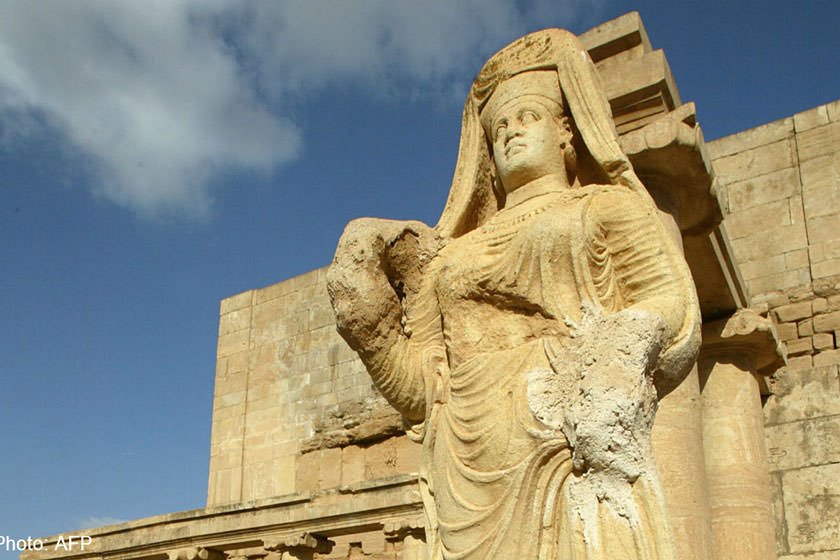
The ancient city of Hatra, registered on the UNESCO World Heritage List, suffered severe damage at the hands of ISIS but was later reclaimed and restored.
The ancient city of Babylon
The ancient city of Babylon ranks among the most famous cities of antiquity and is situated south of Baghdad. This city, which flourished from the Sumerian era to the Achaemenid period, served as the capital of the Babylonian civilization in southern Mesopotamia. During its zenith in the 7th and 6th centuries BCE, Babylon was the capital of the Neo-Babylonian Empire (Chaldea). In 539 BCE, it was conquered by Cyrus, and according to Herodotus, it became the most magnificent city in the world afterward.
The most significant architectural remains from the Achaemenid period in Babylon include a complex structure of a stadium and theater. Constructed with mud bricks, gypsum columns, and bricks, this complex comprises a rectangular colonnaded courtyard and a series of rooms. In 331 BCE, Babylon was conquered by Alexander the Great, who passed away in the Palace of Bactria within the city.
With the establishment of the city of Seleucia during the Seleucid period, Babylon experienced a decline from its former prosperity. Today, the remains of this ancient city, listed on the UNESCO World Heritage List, can be seen approximately 88 kilometers south of Baghdad.
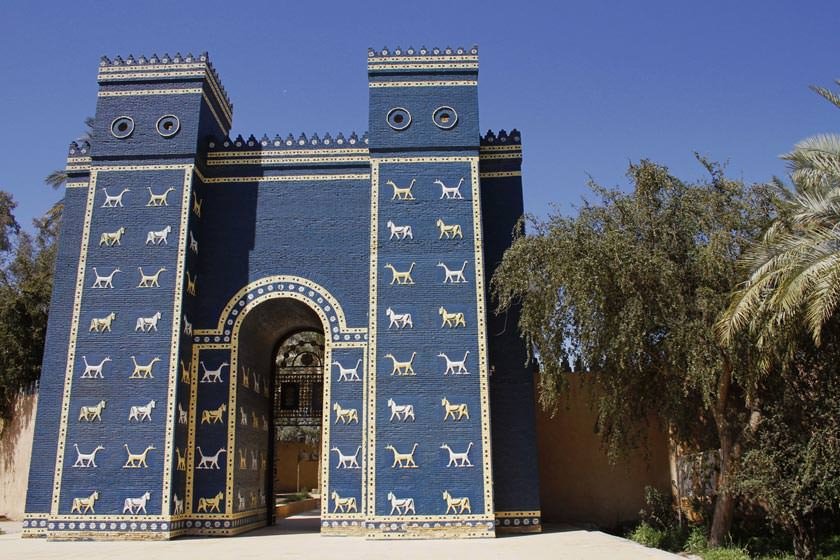
The ancient city of Uruk
The ancient city of Uruk, also known as the city of Warka, is one of the most important cities in Mesopotamia. It is located approximately 270 kilometers on the communication route from Baghdad to Basra, near the city of Samawah, and 20 kilometers from the Al-Haidar railway. The name “Uruk” is mentioned in the Torah, and the Sumerians referred to it as “Unug.”
Notable artifacts from the Parthian period found in Uruk include the Gareus Temple, the Anu Antum Temple, Parthian burials, coffin-shaped sarcophagi, and the statue of the goddess Lamastu. This ancient city is listed on the UNESCO World Heritage List.

The Palace of Ashur
The Palace of Ashur is one of the most important Iranian and Parthian archaeological sites in the ancient city of Ashur. This city, considered one of Iraq’s and Mesopotamia’s most valuable ancient locations, is situated 100 kilometers south of Mosul and west of the Tigris River. It has been inscribed on the UNESCO World Heritage List and dates back to the 1st century AD. With origins tracing back to the 1st millennium AD, the palace underwent expansion in the 3rd century AD.
The architectural design employed in the construction of the Palace of Ashur features four iwans, a structural motif that had been prevalent in Iran for centuries.
Qal’at Al-Akhdar
Qal’at Al-Akhdar, also known as the Abbasid Palace of Akhdar, is a fortress located approximately 50 kilometers south of Karbala in Iraq. The structure of this fortress is in the form of a large rectangular building and was constructed in the year 775 CE. Its location is about 50 kilometers southwest of the city of Najaf and approximately 152 kilometers southwest of Baghdad, near the town of Ain Tamr in the Shithatha region.
The fortress was built by Isa ibn Musa, the nephew of the Abbasid caliph, Al-Mansur. Qal’at Al-Akhdar is indicative of the architectural innovation of the Abbasid era, particularly in relation to its courtyard and mosque.

The Citadel of Erbil
The Citadel of Erbil, recognized as a UNESCO World Heritage site in Iraq, is situated on a mound in the center of the modern city of Erbil, in the Kurdistan region. The walls of the citadel, dating back to the 19th century, still stand as an impregnable barrier. The architectural complex on the mound covers an area of approximately 102,000 square meters.
According to archaeological findings, the history of habitation on this mound dates back to the 5th millennium BCE. The earliest mention of this region is found in the cuneiform inscriptions of Ebla, dating to 2300 BCE. During the Neo-Assyrian Empire, the area gained special significance. In the Sasanian and Abbasid periods, Erbil was recognized as a center of Christianity. In 1258, the citadel was captured by the Mongols, leading to a decline in its importance. In 2007, efforts were made to evacuate and renovate the citadel. Since then, archaeological research in the area has been ongoing.
The Citadel of Erbil is centrally located, allowing easy access. Admission to the citadel is free. Notable attractions within the citadel include the Kurdish Textile Museum, the Cultural Center of the Citadel, the Traditional Hammam, the Stones and Jewelry Museum of Erbil, Mulla Effendi Mosque, the Turkmen Heritage Museum, the Kurdish Music Archive, and the Handwoven Carpets Exhibition.
The ancient city of Nippur
The ancient city of Nippur was one of the most important cities of the Sumerians, situated in the southern region between the Tigris and Euphrates rivers. This city served as the dedicated center for the worship of the Sumerian god Enlil. The most significant Iranian structures in this area date back to the time of the Parthians, including a palace, fortress, and the Temple of Inanna.
The Nippur Library is another crucial discovery in the region, containing many famous works of Sumerian literature such as epic tales, myths, and lists of gods. The ancient city of Nippur was inscribed on the UNESCO World Heritage List in 2017.
The archaeological site of Eridu
The archaeological site of Eridu is situated not far from Nasiriyah and is considered one of the earliest cities in the southern region of Mesopotamia. Located approximately 12 kilometers from the ancient city of Ur, Eridu is the southernmost city where temple structures were established during the Sumerian civilization. As the temples grew in size, the extent of the cities expanded, transforming small villages into larger urban centers.
In Sumerian mythology, Eridu was originally the residence of Enki, the god of water. Later, this deity was revered among the Akkadians under the name Ea, and Eridu was considered the city he founded. Like other temples in Sumerian cities, his temple in Eridu was constructed using baked bricks. This temple, known as Abzu, was the most important structure in the ancient city of Eridu. In Sumerian civilization, Abzu referred to an ocean beneath the earth from which, according to their beliefs, life originated.
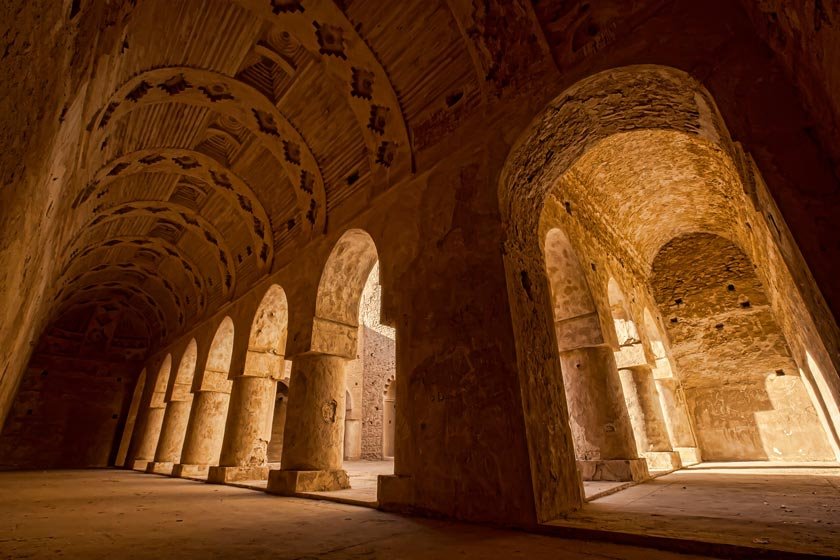
The archaeological site of Eridu is now located in an area known as Tell Abu Shahrain, approximately 100 kilometers south of Basra. This ancient city is part of a dossier called “Ahwar of Southern Iraq: Refuge of Biodiversity and Relict Landscape of the Mesopotamian Cities,” registered on the UNESCO World Heritage List. This dossier includes the Great Marsh, Central Marshes, East Hammar Marsh, West Hammar Marsh, the archaeological sites of Uruk, Ur, and the archaeological site of Eridu.
Visiting the archaeological site of Eridu is free, and you can explore it at any hour of the day.
Taq Kasra
Taq Kasra, also known as the Arch of Ctesiphon, is one of the historical remnants from the time of the Sasanian Empire in ancient Iran, currently located in Iraq. In the construction of this structure, Iranian architects utilized minimal tools and resources, making Taq Kasra now known as a masterpiece of ancient Iranian engineering. This historical building is considered one of the most prominent examples of vaulted arch architecture during the Sasanian era.
After many centuries and changes in national boundaries, Taq Kasra, which was once within the territory of the Iranian Empire, became separated from Iran. Neglect of this historical monument over the recent years has resulted in serious damages to Taq Kasra. In the past, the Iwan of Ctesiphon served as the entrance to the Kasra Palace, but now only a part of Taq Kasra remains as a testament to its former grandeur. The Iwan of Ctesiphon, or Taq Kasra, is one of the most remarkable attractions in Iraq with a rich history. If you are interested in learning about the unique architectural marvel and the story behind its construction, stay with us for more details.
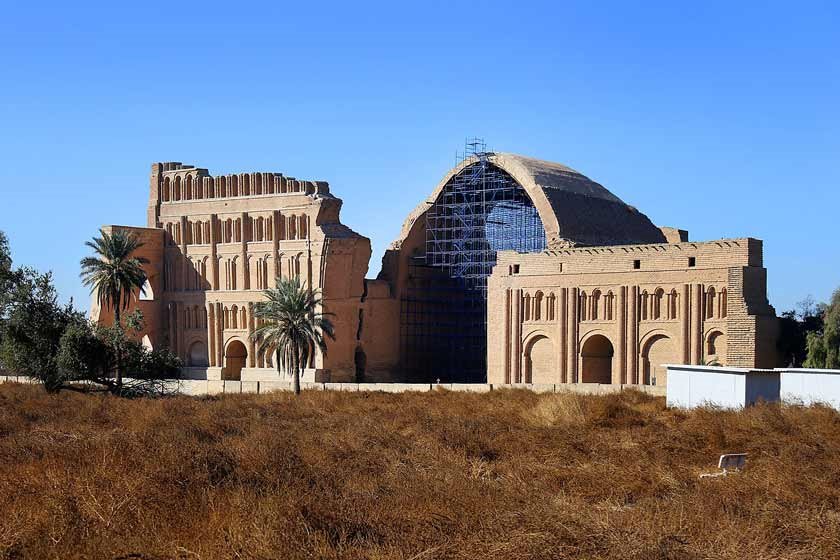
The shrine of Imam Hussein
The shrine of Imam Hussein, also known as the Husseinian Shrine, is located in Karbala and houses the tomb of Abu Abdullah Hussein ibn Ali, famously known as Sayyid al-Shuhada (the Master of Martyrs), who is the third Shia Imam. Imam Hussein (AS) opposed Yazid ibn Muawiya, the ruler of his time, and fought in the Battle of Karbala. On the day of Ashura, the 10th of Muharram in the year 61 AH (Islamic calendar), Imam Hussein attained martyrdom in the desert of Nainawa. Today, the shrine of Imam Hussein has become one of the most significant religious attractions for Shia Muslims.
In this holy shrine, Imam Hussein (AS), along with his son Imam Ali al-Akbar (AS) at his feet and Imam Ali al-Asghar (AS) on his chest, is buried in the sacred tomb. Moreover, most of the martyrs of Karbala are interred in this shrine. In the northeast of the shrine of Imam Hussein, the shrine of Hazrat Abbas (AS) is situated, and the area between the two shrines is known as Bayn al-Haramayn (between the two sanctuaries).
The Askariyyain Shrine
The Askariyyain Shrine, the resting place of Ali ibn Muhammad (AS), the tenth Imam, and Hasan ibn Ali (AS), the eleventh Imam of Shia Muslims (known as the Askariyyain), is located in Samarra, Iraq. Additionally, the graves of Narjis Khatun, the mother of Imam al-Mahdi (AS), and Hakima Khatun, the daughter of Muhammad ibn Ali al-Taqi (AS) (the ninth Shia Imam) and the sister of Ali ibn Muhammad (AS) (the tenth Shia Imam), are also interred in the shrine in the city of Samarra. The cellar of occultation (the place where the occultation of Imam al-Mahdi began) is situated in the western part of the Samarra shrine.

The house of Ali ibn Abi Talib (AS)
The house of Ali ibn Abi Talib (AS) originally belonged to “Umm Hani,” the sister of Imam Ali (AS). After Imam Ali’s arrival in Kufa, he chose to reside in this house. The house is located in the southwest corner near the Kufa Mosque. Inside, there are small and humble rooms, each attributed to one of the esteemed children of Imam Ali (AS). Additionally, the place where the body of Imam Ali (AS) was washed is also seen in this house.
The sacred shrine of Salman al-Farsi
The sacred shrine of Salman al-Farsi is located approximately 30 kilometers southeast of Baghdad in the city of Madain. This city was one of the ancient cities of the world and served as the capital of Iran during the Sassanian period and at the time of the birth of the esteemed Prophet of Islam, Muhammad (PBUH).
The Mosque of Salman al-Farsi, which houses his holy shrine, is considered one of the historical mosques in Iraq.
The shrine of Kazimayn
The shrine of Kazimayn belongs to the seventh and ninth Imams of Shia Muslims, namely Musa al-Kadhim (AS) and Muhammad al-Taqi, also known as “Muhammad al-Jawad” (AS). The names Kazim and Jawad are often combined to form Kazimayn or Jawadayn, and the area where they are buried is known as Kazimiyah or Kazimiyya, which is part of the northern region of Baghdad. These two Imams are, respectively, the father and son of Ali ibn Musa al-Ridha (AS).

